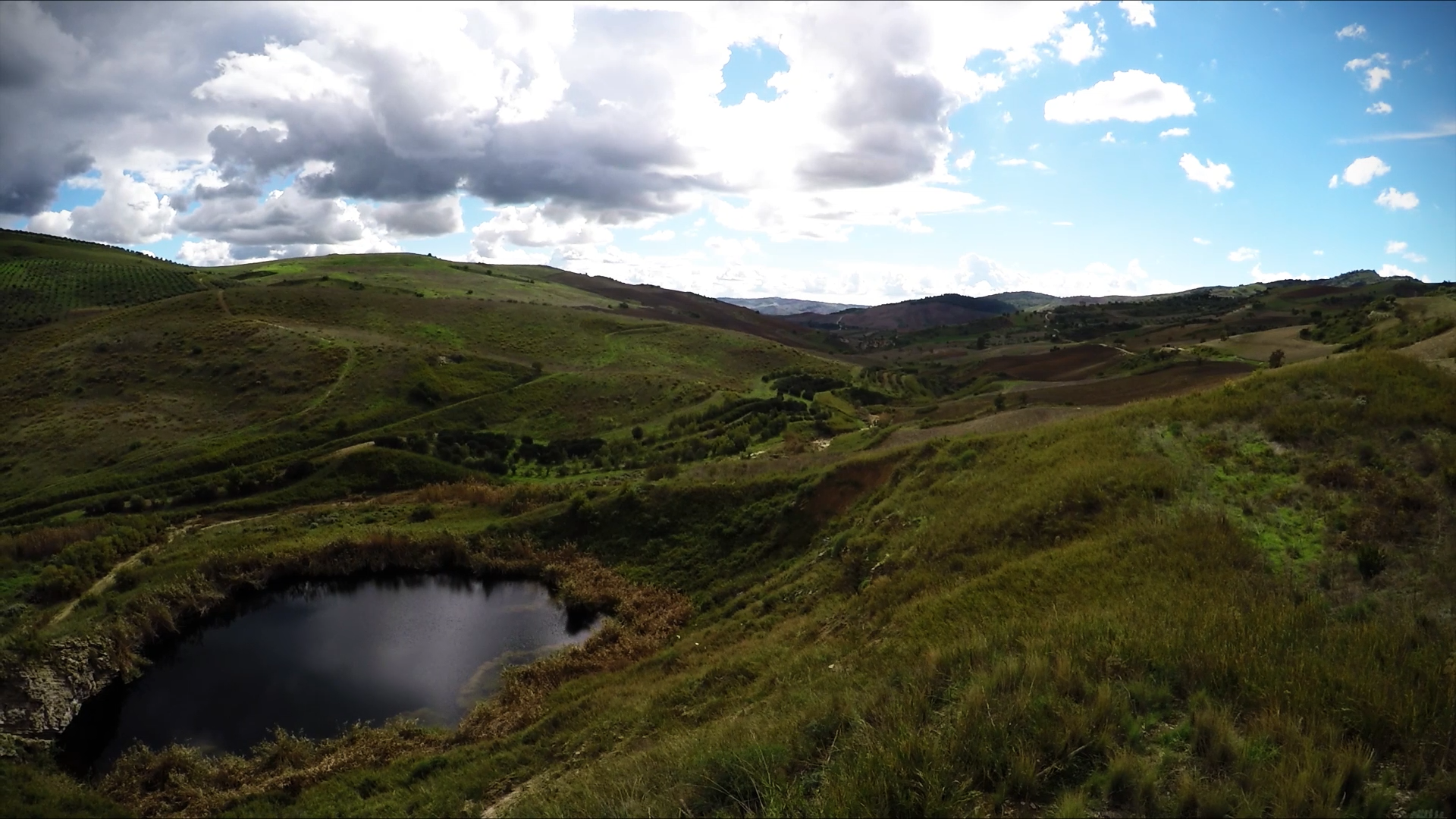Monte Capodarso and the Southern Imera Valley
The Monte Capodarso and Southern Imera Valley Oriented Nature Reserve is a regional nature reserve of Sicily established in 1999. Among the major protected areas of the island, it includes, in a fluvial environment, the gorges of Capodarso, the Grotta delle Meraviglie with unexplored cavities, the remains of a Hellenized indigenous center, with an ancient staircase carved into the rock. In the immediate vicinity of the reserve, in the Terrapelata district, there are the maccalube of Caltanissetta, an area affected by sedimentary volcanism phenomena.
The Reserve area has been included in the list of sites of Community importance, pursuant to Directive 92/43/EEC, and in the Network of European Geoparks, within the Rocca di Cerere Park.
The original wood cover is now completely absent and in its place areas of steppe vegetation prevail, with a prevalence of steppe esparto (Lygeum spartum) and ampelodesmos (Ampelodesmos mauritanicus), or garrigue areas, with Thymelaea hirsuta and Thymus capitatus.
Around the watercourses there is also a vegetation typical of the coastal brackish marshes. The calcarenitic cliffs of the valley are home to rocky vegetation which includes the Sicilian atamanta (Athamanta sicula), the fruticosa silene (Silene fruticosa) and the stonecrop (Sedum sediforme). Among the numerous endemic species we should mention the hollyhock of Agrigento (Malva agrigentina), the hairy cabbage (Brassica villosa subsp. tinea), the Limonium optimae, the Sorrentine aster (Aster sorrentinii), the Palermitan ophrys (Ophrys panormitana) , the aristolochia (Aristolochia clusii) and the Calabrian pigamo (Thalictrum calabricum). The reserve is a stop on the spring and autumn migration routes of many species of birds including the gray heron (Ardea cinerea), the little egret (Egretta garzetta), the pintail (Anas acuta), the coot (Fulica atra), the Hen Harrier (Circus cyaneus).
Other nesting species are the black-winged stilt (Himantopus himantopus), the stone curlew (Burhinus oedicnemus), the little courier (Charadrius dubius), the mallard (Anas platyrhynchos), the moorhen (Gallinula chloropus), the marsh (Circus aeruginosus), reed warbler (Acrocephalus scirpaceus), reed warbler (Acrocephalus arundinaceus) and little bittern (Ixobrychus minutus). Among the mammals you can see the wild cat, the porcupine, the hedgehog, the weasel, the wild rabbit and the fox, while the herpetofauna is represented by the harmless snake (Zamenis longissimus) and the Sicilian marsh turtle (Emys trinacris). .
Lake Sfondato Integrated Nature Reserve
The Sfondato Lake Integrated Nature Reserve, located in the Caltanissetta area a few kilometers from Marianopoli, was established by the Sicilian Region in 1997. The area of the reserve includes 13 hectares of land and includes the Sfondato Lake, located east of Monte Mimiani at an altitude of about 368 m above sea level
The Sfondato Lake is of karst formation and is just over ten meters deep and has a total area of 3.4 sq km. The formation of the Sfondato lake is quite recent. In fact, it dates back to 1907, the year in which the breakthrough of the area took place following the erosive action of the underlying rocks. The Sfondato lake has no visible tributaries and therefore it is believed to be fed by springs or underground aquifers.








